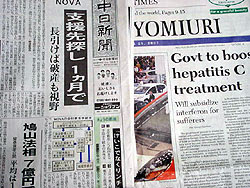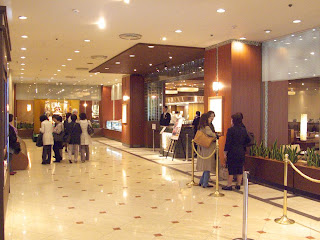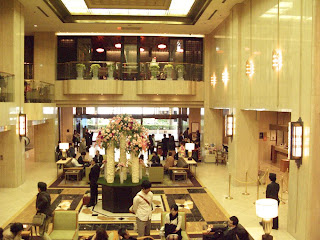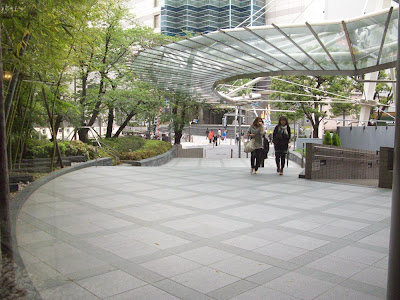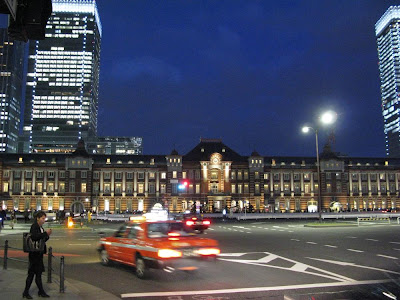ワヒネ 小説
New Zealand has created a niche for itself as a sparsely populated, grandly landscaped, green Pacific Arcadia thanks to decades of tourism PR topped by having featured as the setting for the Lord of the Rings movie. The "garden city" of Christchurch has been at the forefront of this portrayal, as the gateway to the skies of the more touristically popular of the two main islands, the South Island.
Giselle and the Fate of Wahine, by the Japan-based New Zealander, Marty Walpole, is the lyrical title of a novel set in New Zealand, and opening in Christchurch. It is a work of historical fiction based on the Wahine disaster of 1969, when the inter-island car ferry, the Wahine, sank in Wellingon harbour on a run from Christchurch, ending in the loss of scores of lives.
Wahine means "maiden" in Maori, and the name alone adds a poignant edge to the tragedy. But does Giselle and the Fate of Wahine extend the title's lyricism with perhaps a gesture to mythical Maori maidenhood? Does it maybe open with a sketch of the stately, small-city beauty of 1960s Christchurch? Does it leverage anything of the nature resort reputation that New Zealand has woven itself over the past few decades?
No. Giselle and the Fate of Wahine opens an hour before the city's "rush hour," with its "parks with joggers," garbage collectors' "huge trucks," and "uniformed coffee shop and restaurant staff placing chalkboard menus on the wet sidewalks." The reader's eyebrows are immediately raised - that is if the reader is at all familiar with the provincial sleepiness of late 1960s New Zealand when jogging as a personal regime was in its raw infancy and pretty much limited to members of harriers clubs, chainstore-like uniformed coffee shop staff a virtually unknown phenomenon, and the idea of restaurants opening before, we are told, the buses had even started their runs preposterous.
In other words, Giselle opens with a scene reminiscent of legendary American urbania - thousands of miles from Christchurch and still decades before anything remotely like what is described there came to typify the place—if it does even now. The vocabulary alone with its "chalkboards" (i.e. blackboards) and "sidewalks" (footpaths) is a world away from the Kiwi lingo of the 1980s, even, (when this reviewer lived there), let alone the 1960s.
This fake, foreign grittiness continues with the first speech act encountered in the book: "'About fucking time,' Emma muttered." Fucking? 1969 New Zealand? Yeah, right - da gangsta rap made her do it. But, in an abrupt flip, consider the only time we get to see the Garden City by night, or, more precisely, nearby Lyttelton Harbour. Try Google Imaging the locale to get an idea of how small it is in 2013, let alone in 1969, then come back and ponder how "Emma marveled at the night view of the harbor, with its neon." Hardcussin' Emma has suddenly turned lacebodiced Heidi-comes-to-town, overwhelmed by the sight of the town's pub sign.
Other jarring anachronisms include a sheet of A4 (not foolscap), the wind blowing in km/h, and headaches being cured with the obscure Panadol (not the actually ubiquitous Disprin).
Most damningly of all, there are no characters in Giselle and the Fate of Wahine, only character names. No one is lovable, no one is hateable, no one is even really much in between: there are just names fitted with apparently random, generally unevocative, physical descriptions here and there (like "a small man with a thin body") that are assigned actions and words. The hint of a relationship (incidentally, girl-on-girl), is introduced a quarter of the way through, but even that is left hanging, and virtually no character development takes place whatsoever. Wooden is the word that comes to mind.
Physics is an insuperable problem in Giselle. In an unintended sci-fi-like twist, different objects and characters apparently occupy independent dimensions within the same scene. One very remarkable example is presented in a single paragraph: "Furniture slid across the floors, piling up on the lower side of the room. Older passengers had trouble sitting in the chairs and opted to sit on the carpeted floors. One young woman had been trapped under the crashing furniture and was hauled out by other passengers." Yet, amid this violently unstable mayhem, the very next sentence describes how "Emma and Janice sat with coffee in their hands. Both were quiet, watching the people around them. Emma sat forward and waved to Richard who was pouring coffee for two ladies sitting nearby." Go figure. Or how about when the Wahine is battling the waves in Wellington Harbour, driven off the reef on which she had foundered by winds of up to 250km/h? Bugger me if there aren't "Along the cliffs thousands of people holding umbrellas"! Aye, they put things together good'n'proper in them days, they did.
Giselle and the Fate of the Wahine is full of grammatical errors, especially punctuation-related, and questionable vocabulary choices; but these pale into insignificance against much more annoying features, probably the biggest being the inordinate repetitiveness and longwindedness that plague the book. I swear it's going to take me a good ten days to recover from being battered over the head repeatedly with unnecessary, uninspired and clumsy descriptions, often in histrionic metaphors, of how the sea heaved, the storm raged, the wind howled, and the rain lashed relentlessly, fiercely, unforgivingly, brutally (take it away, Mr. Roget!), every two or three paragraphs, virtually right the way through.
I kept waiting for something to happen throughout Giselle and the Fate of Wahine's 324 pages, but nothing did. The disaster is not the germ of the book, it engulfs the book and leaves nothing of novelistic value in its aftermath. In fact it is less a novel than an unglued report. Even what are meant to be crises come and go colourlessly, without credibility or impact. It is repetitive, careless, naive, and contextless, lacking any storytelling spark, and memorable only for its headshaking incongruities.
The author clearly has the will, but the way is still being discovered. Broader and deeper reading of others' writing would no doubt go a long way.
Giselle and the Fate of Wahine was published just last month, as a paperback only, and can be ordered online from Pegasus.
© JapanVisitor.com
Inside Track Japan For Kindle
Japan book reviews
Tags
Japan
Kiwi
expatriate
author
Walpole
Wahine
 |
| Giselle and the Fate of Wahine |
New Zealand has created a niche for itself as a sparsely populated, grandly landscaped, green Pacific Arcadia thanks to decades of tourism PR topped by having featured as the setting for the Lord of the Rings movie. The "garden city" of Christchurch has been at the forefront of this portrayal, as the gateway to the skies of the more touristically popular of the two main islands, the South Island.
Giselle and the Fate of Wahine, by the Japan-based New Zealander, Marty Walpole, is the lyrical title of a novel set in New Zealand, and opening in Christchurch. It is a work of historical fiction based on the Wahine disaster of 1969, when the inter-island car ferry, the Wahine, sank in Wellingon harbour on a run from Christchurch, ending in the loss of scores of lives.
Wahine means "maiden" in Maori, and the name alone adds a poignant edge to the tragedy. But does Giselle and the Fate of Wahine extend the title's lyricism with perhaps a gesture to mythical Maori maidenhood? Does it maybe open with a sketch of the stately, small-city beauty of 1960s Christchurch? Does it leverage anything of the nature resort reputation that New Zealand has woven itself over the past few decades?
No. Giselle and the Fate of Wahine opens an hour before the city's "rush hour," with its "parks with joggers," garbage collectors' "huge trucks," and "uniformed coffee shop and restaurant staff placing chalkboard menus on the wet sidewalks." The reader's eyebrows are immediately raised - that is if the reader is at all familiar with the provincial sleepiness of late 1960s New Zealand when jogging as a personal regime was in its raw infancy and pretty much limited to members of harriers clubs, chainstore-like uniformed coffee shop staff a virtually unknown phenomenon, and the idea of restaurants opening before, we are told, the buses had even started their runs preposterous.
In other words, Giselle opens with a scene reminiscent of legendary American urbania - thousands of miles from Christchurch and still decades before anything remotely like what is described there came to typify the place—if it does even now. The vocabulary alone with its "chalkboards" (i.e. blackboards) and "sidewalks" (footpaths) is a world away from the Kiwi lingo of the 1980s, even, (when this reviewer lived there), let alone the 1960s.
This fake, foreign grittiness continues with the first speech act encountered in the book: "'About fucking time,' Emma muttered." Fucking? 1969 New Zealand? Yeah, right - da gangsta rap made her do it. But, in an abrupt flip, consider the only time we get to see the Garden City by night, or, more precisely, nearby Lyttelton Harbour. Try Google Imaging the locale to get an idea of how small it is in 2013, let alone in 1969, then come back and ponder how "Emma marveled at the night view of the harbor, with its neon." Hardcussin' Emma has suddenly turned lacebodiced Heidi-comes-to-town, overwhelmed by the sight of the town's pub sign.
Other jarring anachronisms include a sheet of A4 (not foolscap), the wind blowing in km/h, and headaches being cured with the obscure Panadol (not the actually ubiquitous Disprin).
Most damningly of all, there are no characters in Giselle and the Fate of Wahine, only character names. No one is lovable, no one is hateable, no one is even really much in between: there are just names fitted with apparently random, generally unevocative, physical descriptions here and there (like "a small man with a thin body") that are assigned actions and words. The hint of a relationship (incidentally, girl-on-girl), is introduced a quarter of the way through, but even that is left hanging, and virtually no character development takes place whatsoever. Wooden is the word that comes to mind.
Physics is an insuperable problem in Giselle. In an unintended sci-fi-like twist, different objects and characters apparently occupy independent dimensions within the same scene. One very remarkable example is presented in a single paragraph: "Furniture slid across the floors, piling up on the lower side of the room. Older passengers had trouble sitting in the chairs and opted to sit on the carpeted floors. One young woman had been trapped under the crashing furniture and was hauled out by other passengers." Yet, amid this violently unstable mayhem, the very next sentence describes how "Emma and Janice sat with coffee in their hands. Both were quiet, watching the people around them. Emma sat forward and waved to Richard who was pouring coffee for two ladies sitting nearby." Go figure. Or how about when the Wahine is battling the waves in Wellington Harbour, driven off the reef on which she had foundered by winds of up to 250km/h? Bugger me if there aren't "Along the cliffs thousands of people holding umbrellas"! Aye, they put things together good'n'proper in them days, they did.
Giselle and the Fate of the Wahine is full of grammatical errors, especially punctuation-related, and questionable vocabulary choices; but these pale into insignificance against much more annoying features, probably the biggest being the inordinate repetitiveness and longwindedness that plague the book. I swear it's going to take me a good ten days to recover from being battered over the head repeatedly with unnecessary, uninspired and clumsy descriptions, often in histrionic metaphors, of how the sea heaved, the storm raged, the wind howled, and the rain lashed relentlessly, fiercely, unforgivingly, brutally (take it away, Mr. Roget!), every two or three paragraphs, virtually right the way through.
I kept waiting for something to happen throughout Giselle and the Fate of Wahine's 324 pages, but nothing did. The disaster is not the germ of the book, it engulfs the book and leaves nothing of novelistic value in its aftermath. In fact it is less a novel than an unglued report. Even what are meant to be crises come and go colourlessly, without credibility or impact. It is repetitive, careless, naive, and contextless, lacking any storytelling spark, and memorable only for its headshaking incongruities.
The author clearly has the will, but the way is still being discovered. Broader and deeper reading of others' writing would no doubt go a long way.
Giselle and the Fate of Wahine was published just last month, as a paperback only, and can be ordered online from Pegasus.
© JapanVisitor.com
Inside Track Japan For Kindle
Japan book reviews
Tags
Japan
Kiwi
expatriate
author
Walpole
Wahine







